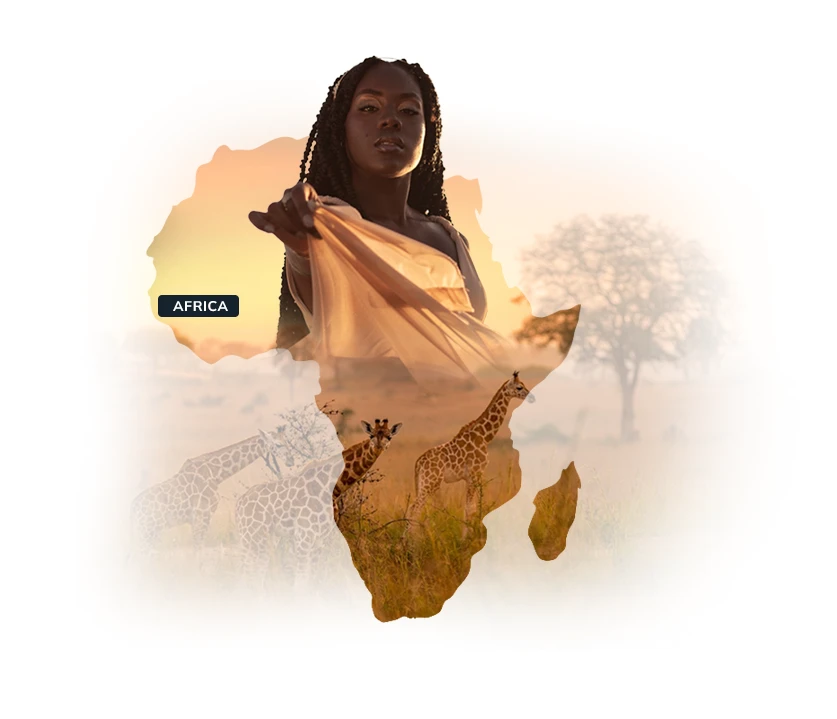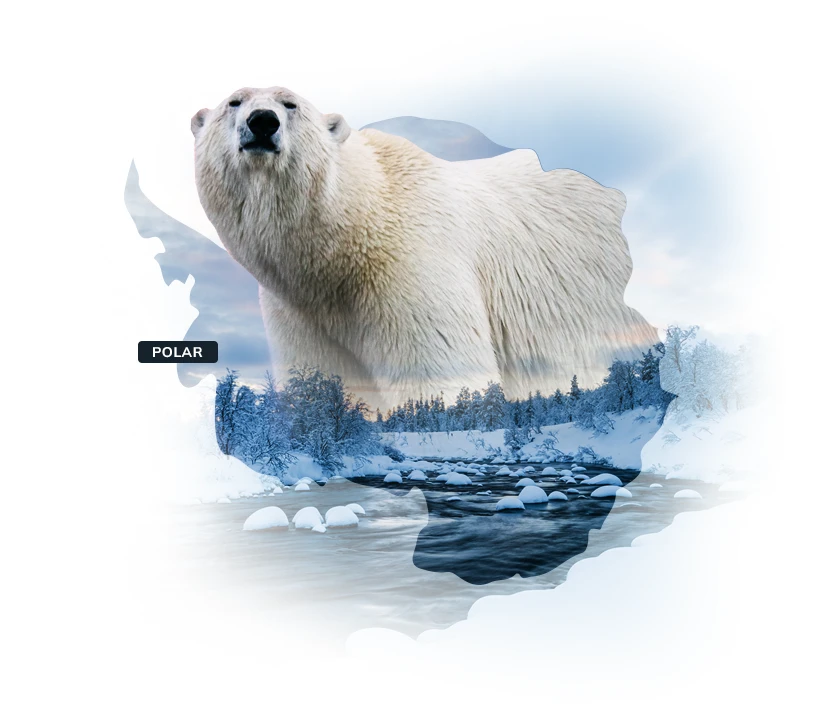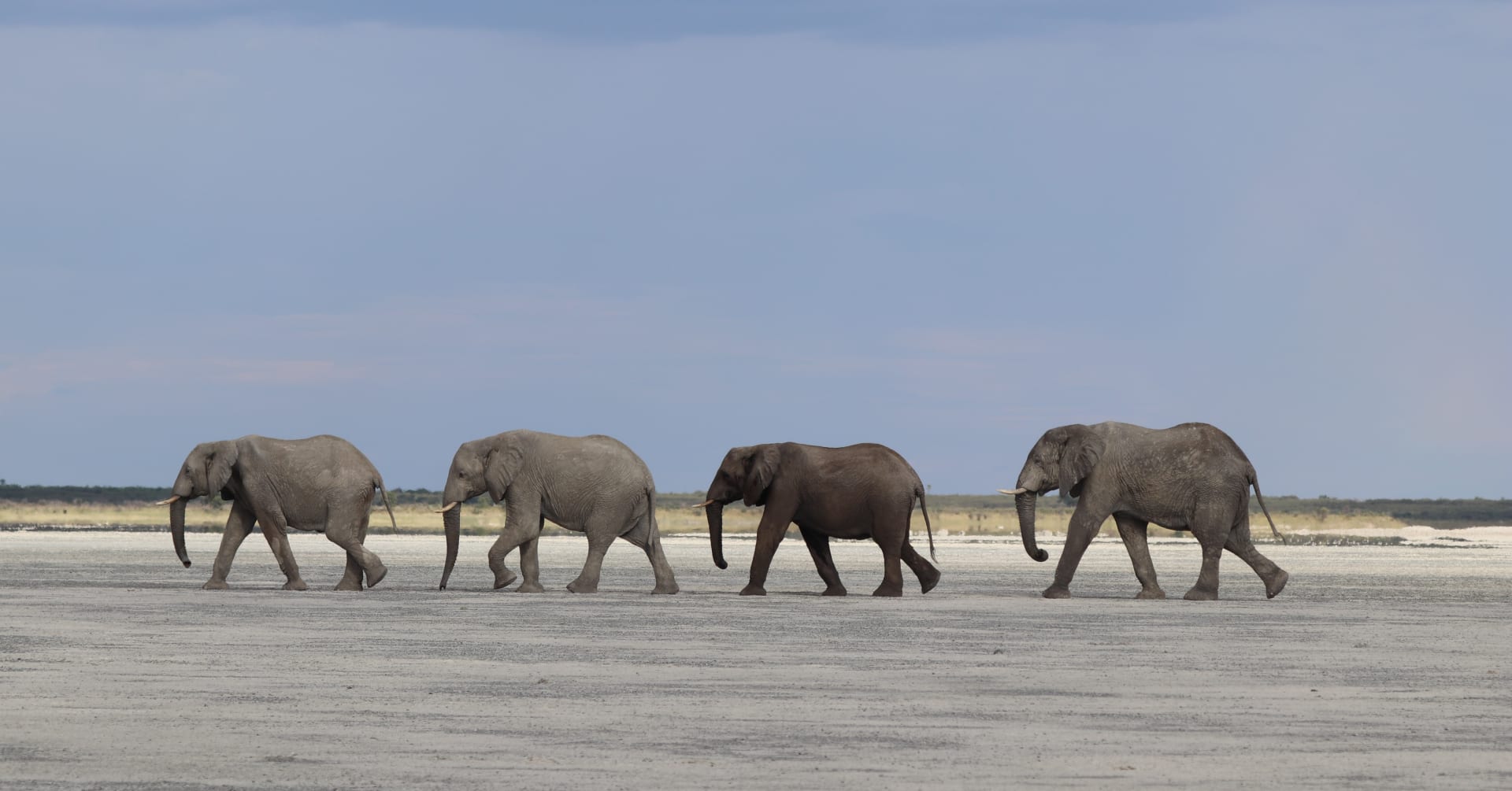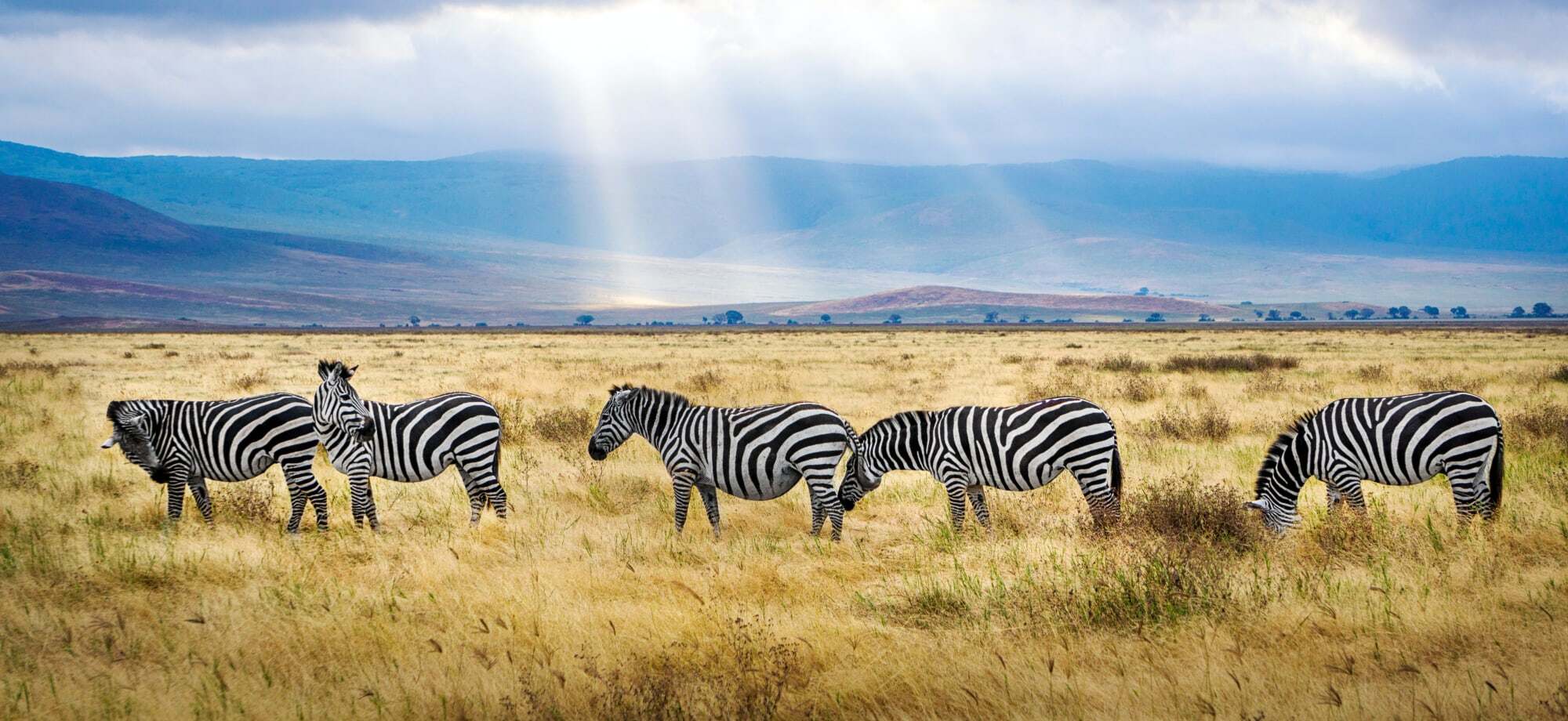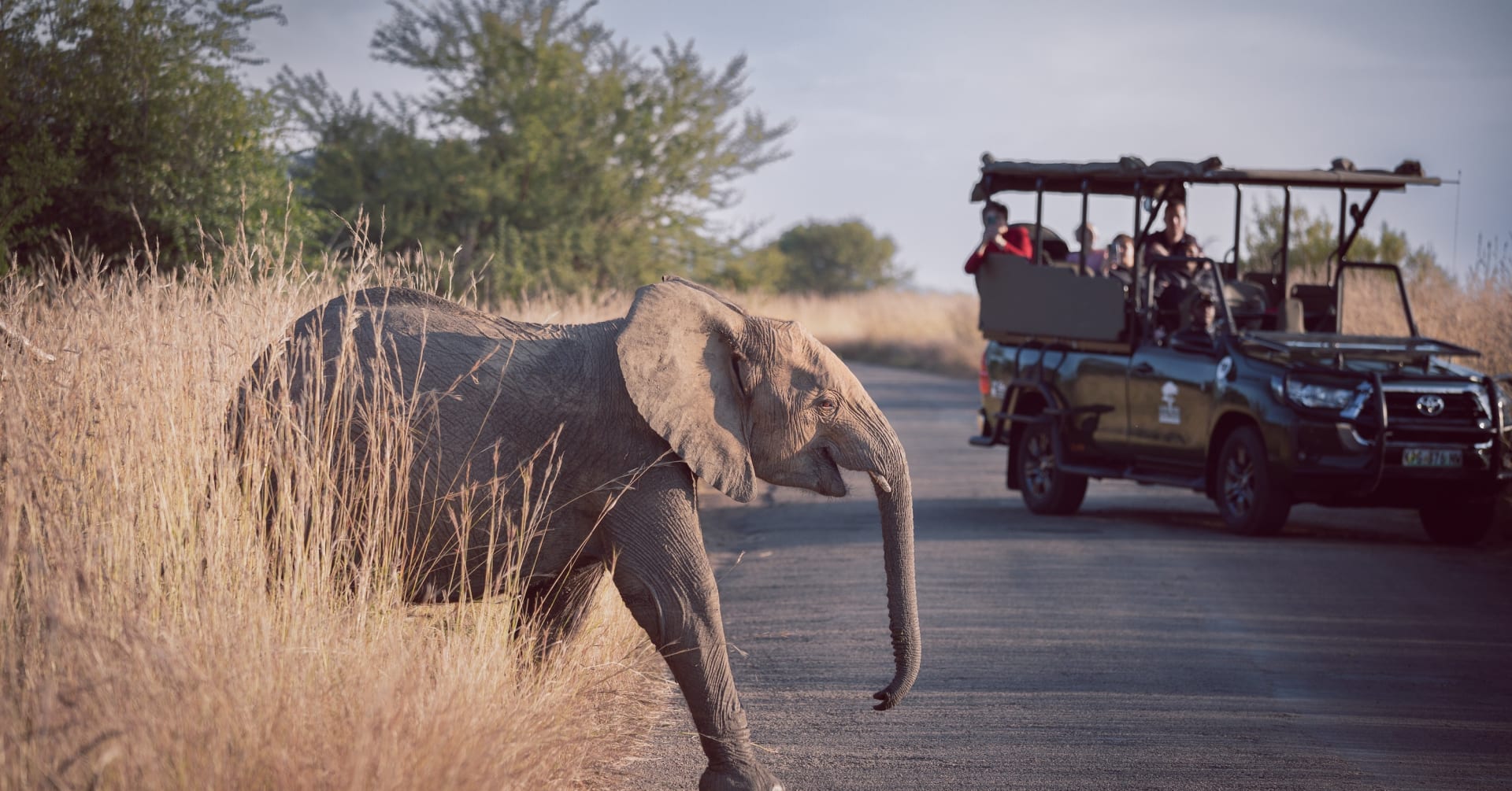Bewildering safari trails, idyllic beach breaks and cultural landmarks.
Be bold and discover Africa in 2025.
Africa, one of the most diverse and enriching continents on Earth. Between its colourful cultures and rich history, Africa brings immense landscapes, including the world’s longest river and largest desert.
From sunsets in the Serengeti to the imposing cascades of Victoria Falls, Africa’s spell-binding tapestry of experiences could never be captured by a top eight list.
However, using the expert advice of our Wayfairer Travel Specialists, we have collated eight of the best countries to visit in Africa which capture its all-encompassing brilliance.
Whether you are searching for a stress-free beach break or a thrilling safari adventure, here are our recommendations for a life-changing trip to Africa in 2025.
|
Safari holidays |
Luxury island escapes |
Culture & city breaks |

|
1. Botswana
Our 2025 pick for diverse safari holidays.
We would be foolish to not include Botswana on this list. Its bold landscapes range from stark salt pans to lush grasslands. Botswana offers all you need for a quintessential Africa safari holiday.
Botswana saw unprecedented success in 2023, being named as Best Safari Country for 2023 by Safari Bookings. Its visitors have continued to love Botswana’s untamed beauty throughout 2024, aided by the country’s sway away from commercialism.
Rather than a sweaty tourist trap, you will discover pristine landscapes accented by carefully-trodden trails. Luxury safari camps in Botswana bring an especially authentic feel, often sleeping you beneath the stars.
Seek big cats, African elephants, wild dogs and an abundance of other wildlife on a safari, by boat, foot or 4x4, during a breath-taking trip to Botswana.
.webp?width=1000&height=727&name=Botswana_Lions_Unsplash_CCBirger_Strahl_2020_j1ul44-4%20(1).webp)
|
2. Namibia
Our 2025 pick for natural wonders and safaris.
Namibia is widely admired for its diversity, bringing photogenic scenery and sought-after safari holidays. Namibia’s ethereal landscapes make you feel secluded from the rest of the world, surrounding you with steep sand dunes.
The isolating remoteness of the Namib Naukluft National Park and Etosha National Park is balanced by the presence of flourishing wildlife. Encounter the famed “Big Five” (elephant, rhino, buffalo, lion and leopard) alongside a profusion of rare antelope and wild dogs.
Visit this emerging leader of animal conservation, seeking its once-in-a-lifetime safaris. Blend this with Namibia’s historic landmarks, the evocative shipwrecks on its Skeleton Coast and the colonial architecture of Windhoek, to discover a life-changing 2025 Africa holiday.
Read more about the extravagant landscapes of Namibia, here:
3. Zimbabwe
Our 2025 pick for estuary beauty and safaris.
Embark on an off-the-beaten-track safari during a trip to Zimbabwe in 2025. Plan an exhilarating Victoria Falls tour and experience its world-famous majesty, uncovering Mother Nature’s unfathomable heights.
Come face-to-face with the beautiful dichotomies of Africa, experiencing the stillness of Mana Pools National Park, where elephants bathe in the floodplains of the Zambezi River.
Following years of turbulence, Zimbabwe has transformed into an incarnation of African beauty, welcoming tourists to bond with its natural splendour.
2025 will see the ongoing success of Zimbabwe, aided by its abundance of conservation projects. During a holiday in Zimbabwe, you feel closer than ever to the wilderness which drives the very Earth that sustains us.
Check out our “Luxury Zimbabwe Safari” itinerary and plan your 2025 trip to Zimbabwe.

|
4. Mauritius
Our top 2025 pick for culture buffs and beach lovers.
Stride off the East Africa’s coast, towards the island paradise of Mauritius. Mauritius is brimmed with newly-built luxury resorts, often sleeping you right beside the Indian Ocean’s boundless blue.
Whilst you are sure to discover idyllic beaches in Mauritius, prepare for much more than this. The quaint island nation is gradually becoming recognised for its rich cultural heritage and magnificent inland landscapes.
Embark on colourful bird-watching excursions and enjoy riverside hikes in Black River Gorges National Park. Visit insightful museums and stroll along the evocative colonial streets of Port Louis. Bond with the lesser known corners of Africa on a holiday in Mauritius in 2025.
Marry a relaxing trip to Mauritius with a South Africa safari on our “Luxury Kruger & Mauritius Holiday” itinerary.
5. Zanzibar, Tanzania
Our top 2025 pick for honeymoons.
Zanzibar’s blue skies and immaculate sunsets attract global romance-seekers. The Tanzanian archipelago extends from East Africa’s coast, tinging any romantic getaway with tranquilizing seclusion and privacy.
As more and more people seek an escape from the hectic working world, honeymoons in Zanzibar become more desired. Lush forests brim its inland areas, edging onto its velvety beaches, where the crystalline Indian Ocean washes up-to your toes. A captivating under-water world awaits you, displacing phone screens and TVs with snorkel and scuba adventures.
Liberate yourself from stress on a Zanzibar holiday in 2025, exploring the undiscovered corners of Tanzania, bonding with local African cultures and reclining in bliss.
Combine a dazzling trip to Zanzibar with a Kenya safari holiday on our “Kenya Zanzibar Honeymoon” itinerary:

|
6. São Tomé and Príncipe
Our top 2025 pick for family beach fun & wildlife watching.
If you are seeking a 2025 beach holiday, São Tomé and Príncipe offers something completely unique. Off the west coast of Central Africa, these two volcanic islands remain an under-the-radar holiday destination.
Trekking along Parrot Peak walk, you gaze ahead at thick green canopies, where jagged rock formations peak through, and you feel welcomed into a lost world.
São Tomé and Príncipe is renowned for its dynamic society, characterised by a distinct cultural fusion of Portuguese and West African. A respect for nature resounds around the islands. Vibrant sea life swirls close to the golden shores, beside majestic humpback whales and swooping sting rays.
Check out our “Sao Tome & Principe Family Holiday” and book your 2025 holiday with Wayfairer today:
7. South Africa
Our top 2025 pick for culture tourism.
South Africa is among the best countries to visit in Africa for its brilliant safaris, cultural hotspots and luxury beach escapes. A holiday to South Africa brings the best of both worlds.
Begin your trip in the iconic Kruger National Park, encountering the “Big Five” along secluded trails. After you have tasted its wild beauty, South Africa’s culture-steeped landscapes quench your curiosity.
Spoil your senses along the Garden Route, balancing adventure activities with visits to local wineries. Experience the buzz of South Africa’s urban scene, touring Johannesburg for a glimpse into the country’s promising future.
Enrich your trip to South Africa in 2025 by connecting with its heart, learning of its turbulent past and remarkable cultural diversity.

|
8. Egypt
Our top 2025 pick for historic landmarks.
Egypt is an unbeaten destination for historic insight. Sightseeing in Egypt transports you back to a time when pharaohs ruled and cats were worshipped.
Egypt stands out from other holiday destinations in Africa and continues to flourish in its tourism infrastructure. The country is predicted to be a top holiday destination next year, landing a top spot on Lonely Planet’s list of “Best Value Destinations” for 2025.
Tantalise all your holiday desires on a trip to Egypt in 2025, spending time on its Red Sea Coast, absorbing the serene luxury of its best resorts.
Embark on an awe-inspiring escapade through Egypt’s most iconic landmarks, from the world-famous Great Pyramids of Giza toward the astounding temples of Luxor and Aswan.

|
